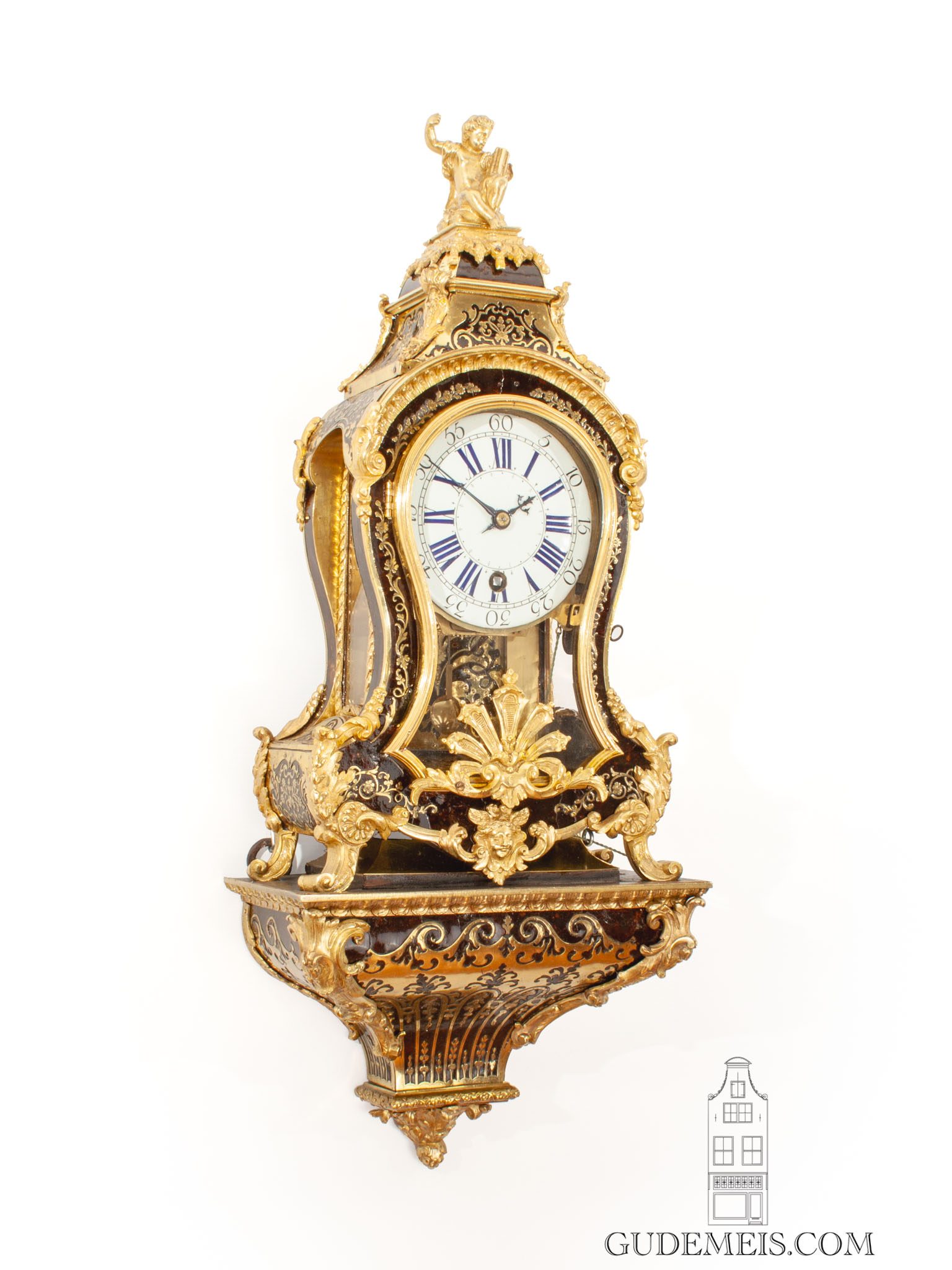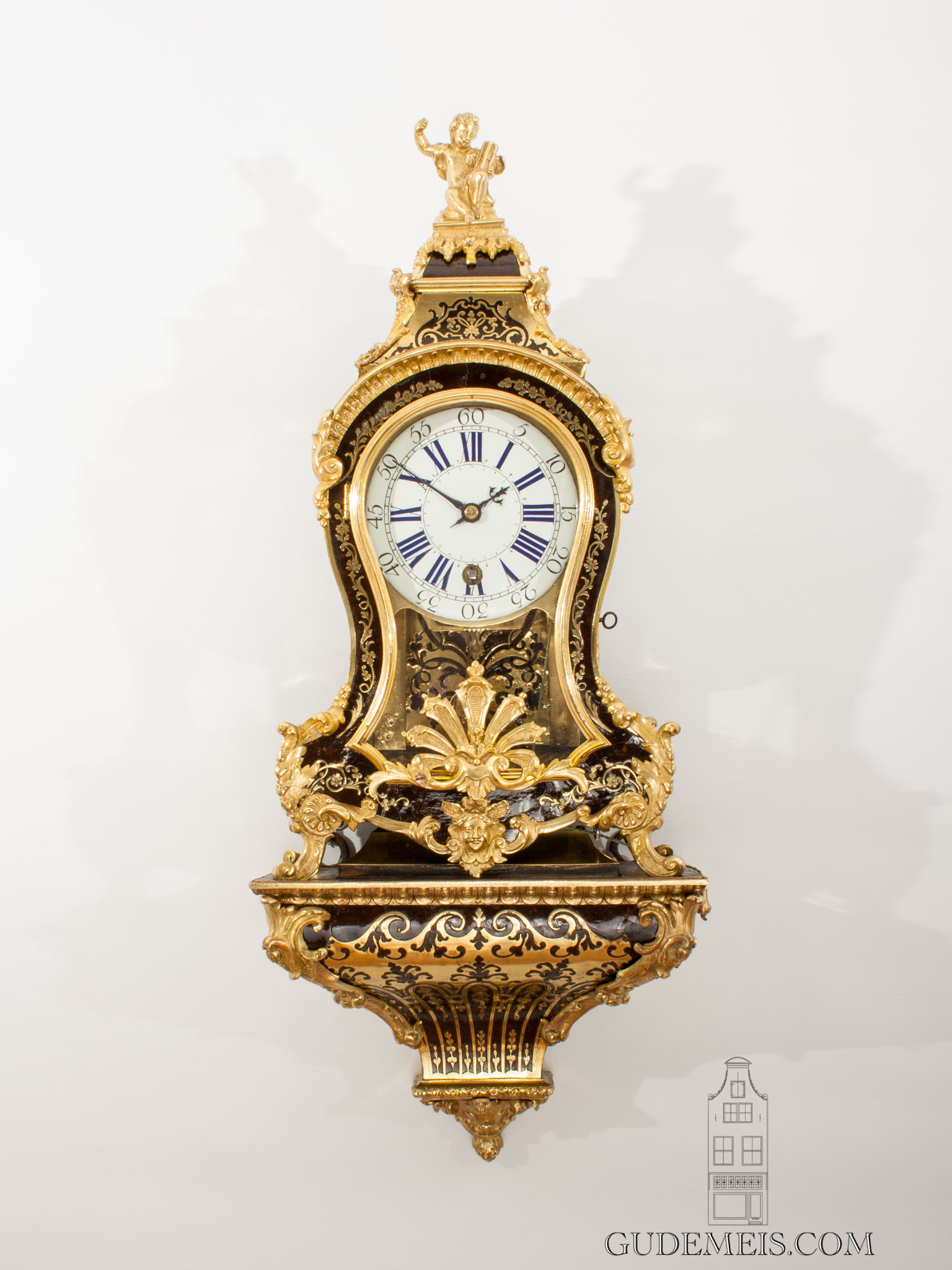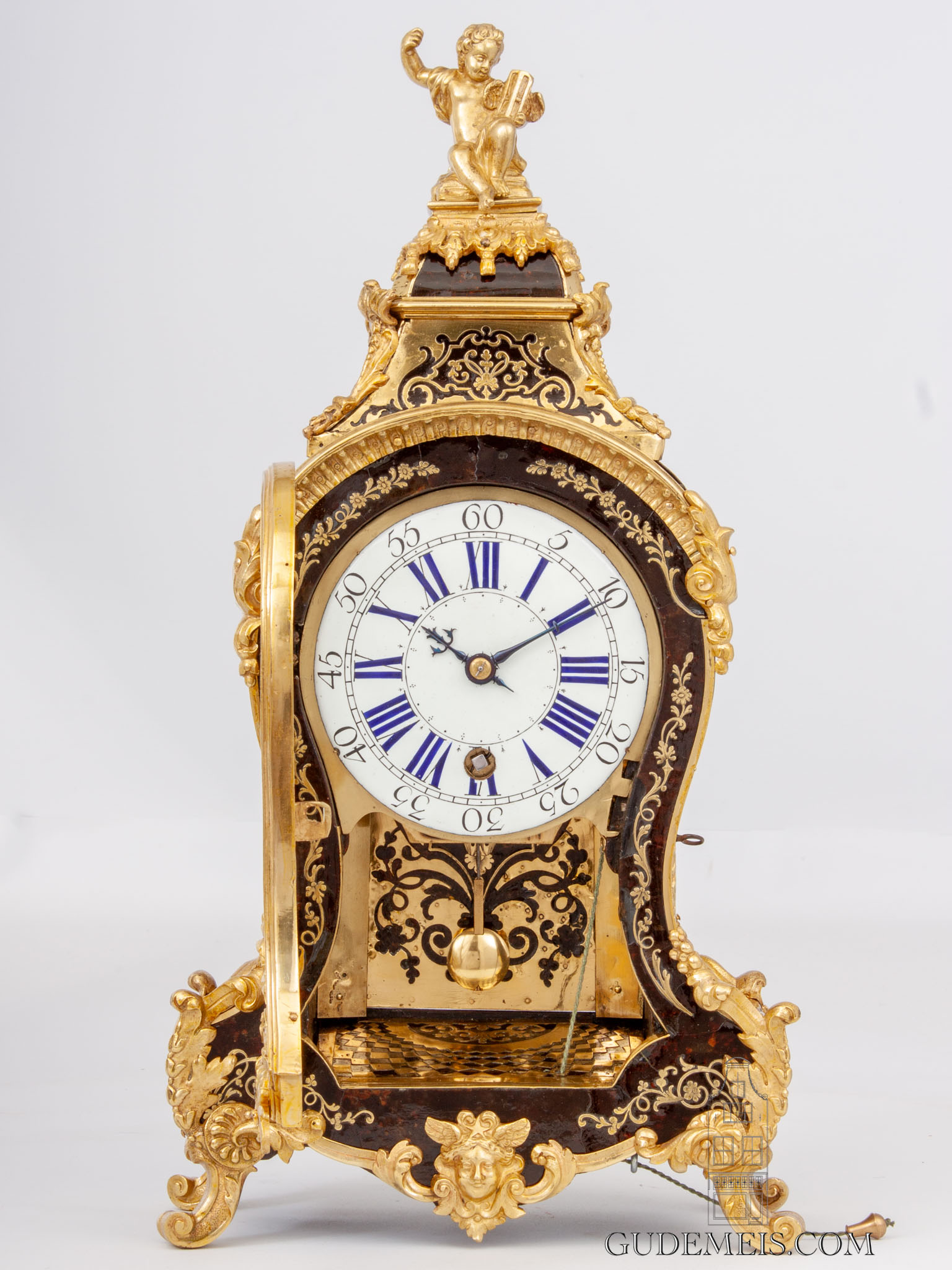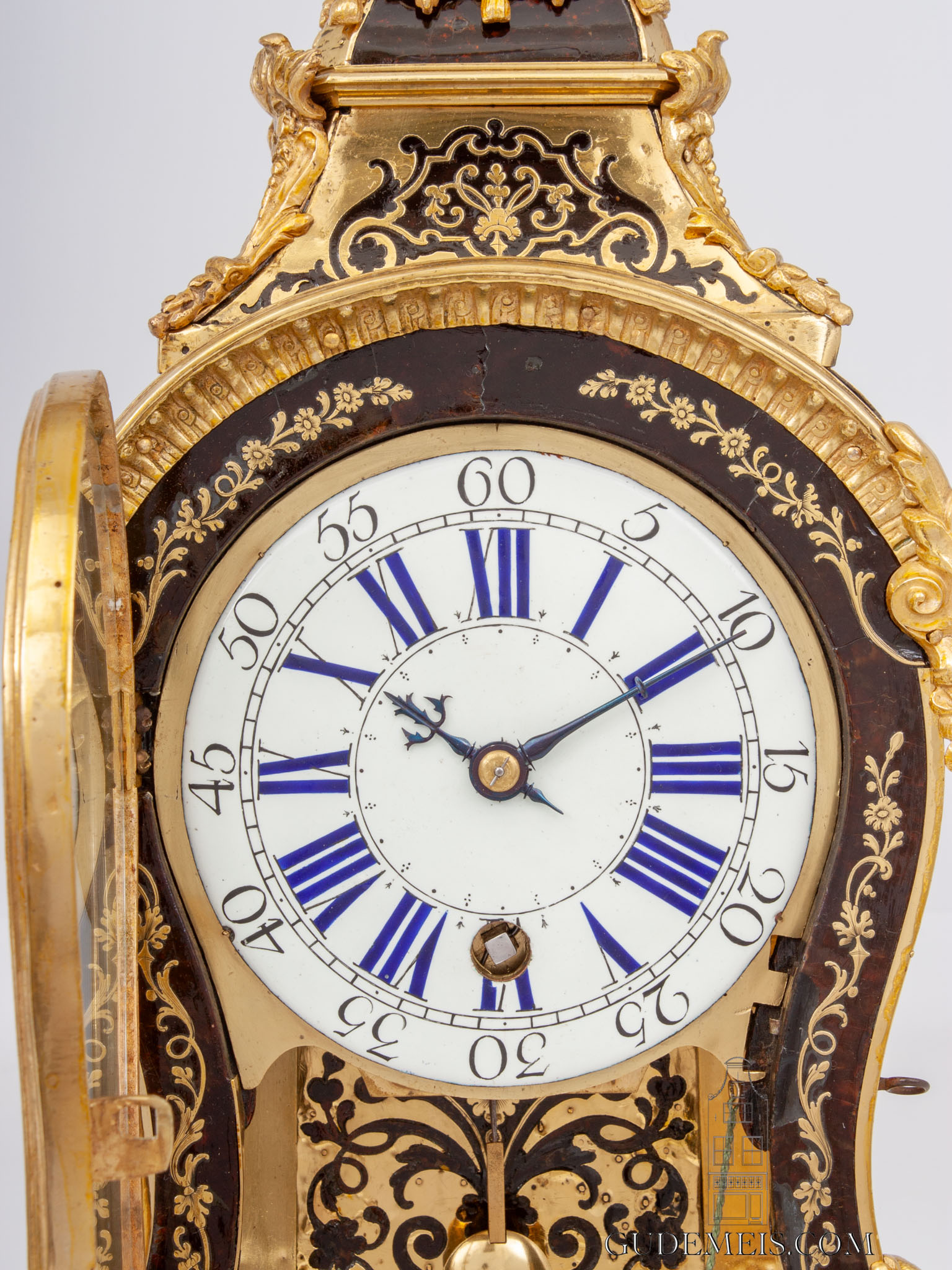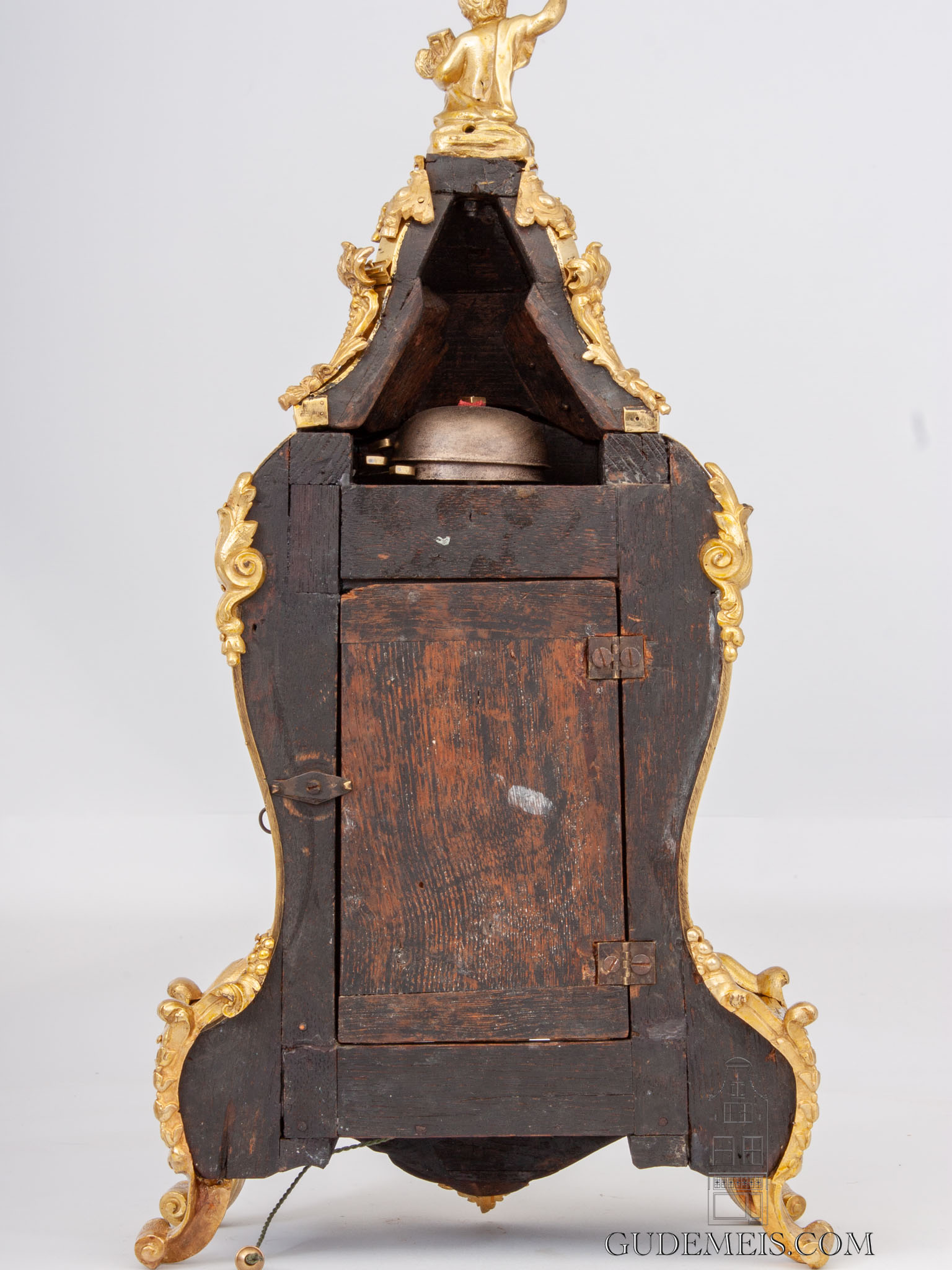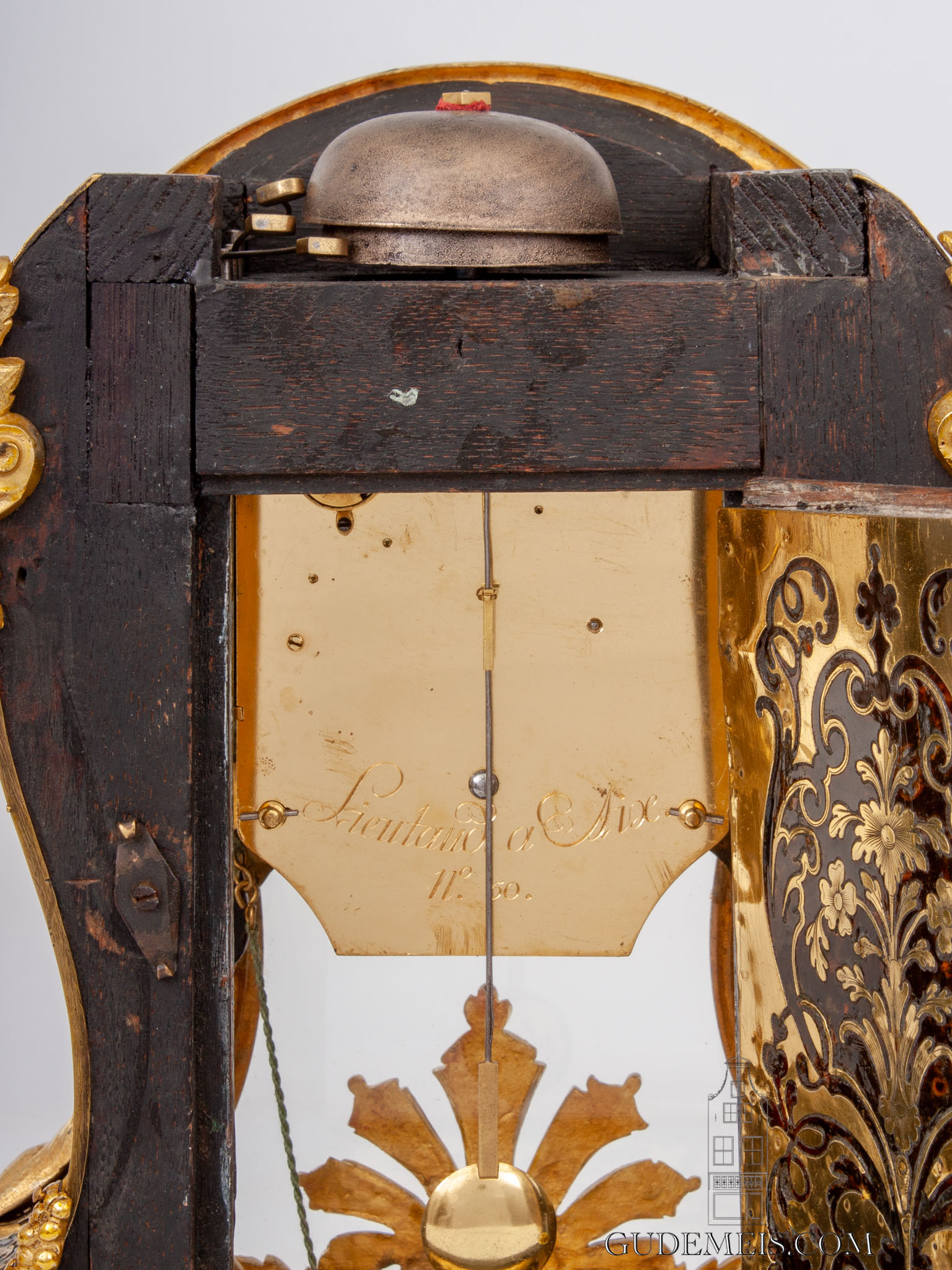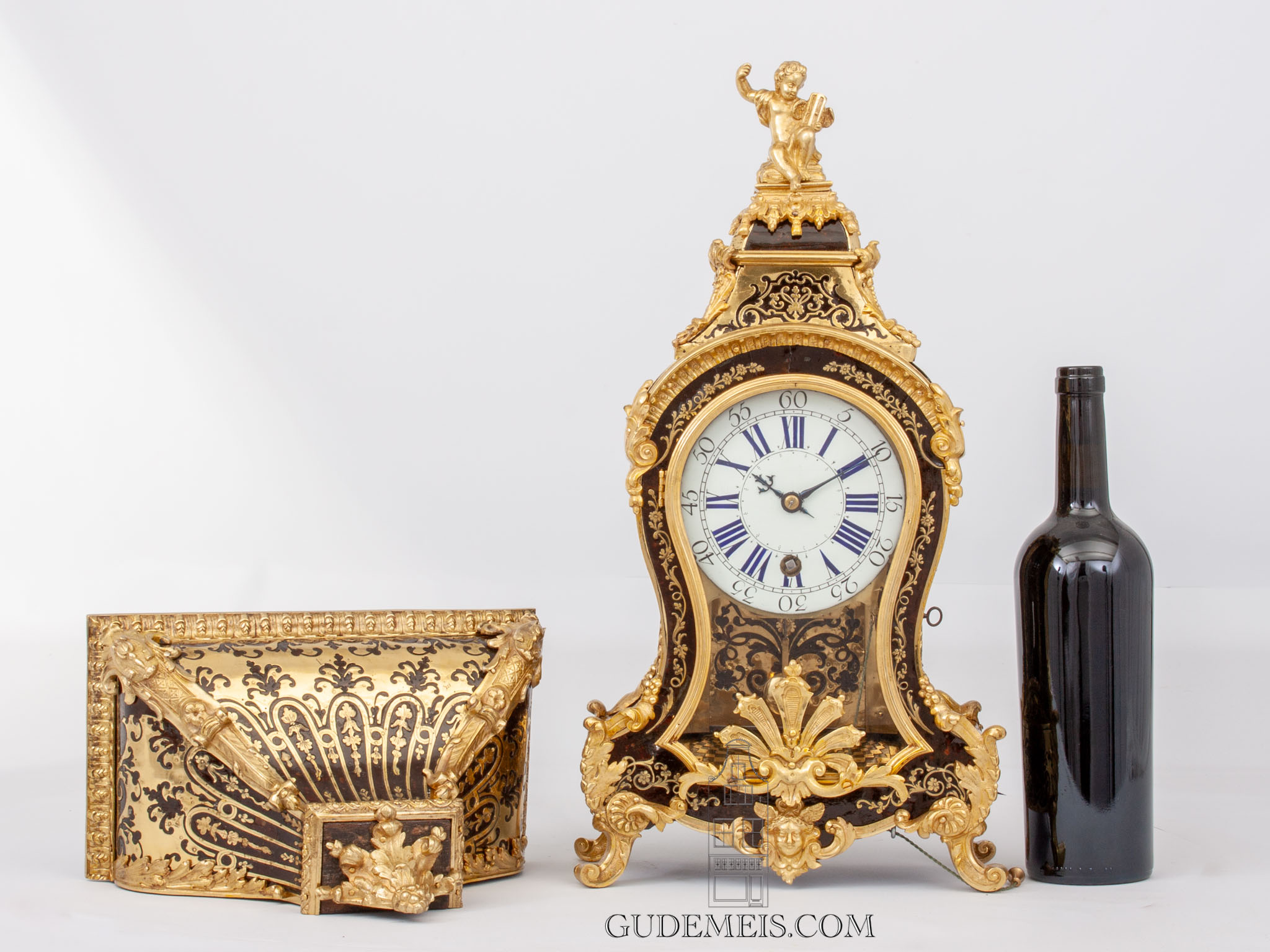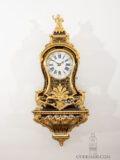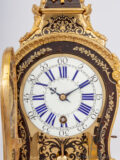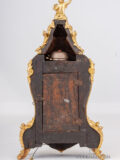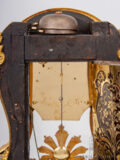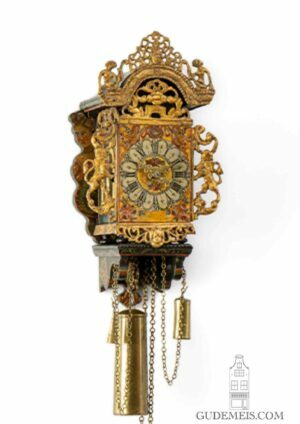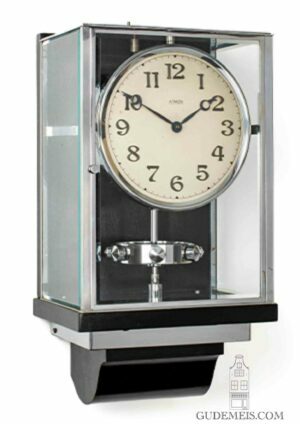A small French Regence Boulle inlaid quarter repeating bracket clock, Lieutaud, circa 1730.
Description
French bracket clock
The French bracket clock evolved from the ‘pendule religieuse’, the first French pendulum clocks. These were mostly hung on the wall or placed on matching stands. While the clocks became larger and more ornate at the end of the seventeenth century, it was also just a small step to add a wall bracket to place these clocks on. The type became popular during the Regence and Louis XV period. As is the case with this clock often these clocks are decorated with tortoiseshell in combination with brass inlay, which is named after the inventor (Charles André) Boulle. Small bracket clocks are rare. This particular one, which lacks striking work but has pull quarter repeating, was probably made for the sleeping quarters. With its well proportioned design it will fit in either a modern or classic interior. It would be the highlight of any room.
The dial
The 12.5-cm enamel dial has Blue Roman numerals for the hours and Arabic numerals for the five minute indication. The beautiful shaped and engraved hands are made of blued steel.
Lieutaud
The movement is driven by a spring barrel and has a duration of at least eight days. It is regulated by tic-tac escapement or roll anchor in combination with a silk suspended pendulum. The plates are joined with well shaped baluster pillars and the back is signed Lieutaud A Aix. The clock has pull quarter repetition on three bells. This feature was very useful of course in a time when one just couldn’t turn on the light. With quarter repetiton one could hear what time it was.
Charles-André Boulle
The waisted case is throughout veneered with a combination a engraved brass and tortoiseshell. This type of decoration is called Boulle-work and was named after its inventor Charles-André Boulle who worked for Louis XIV. The whole is surmounted by a putto holding an hour glass. The case is further embellished with foliate and classical bronze mounts. The front and sides have glass panels. The clock is placed on a matching ogee shape wall bracket.
